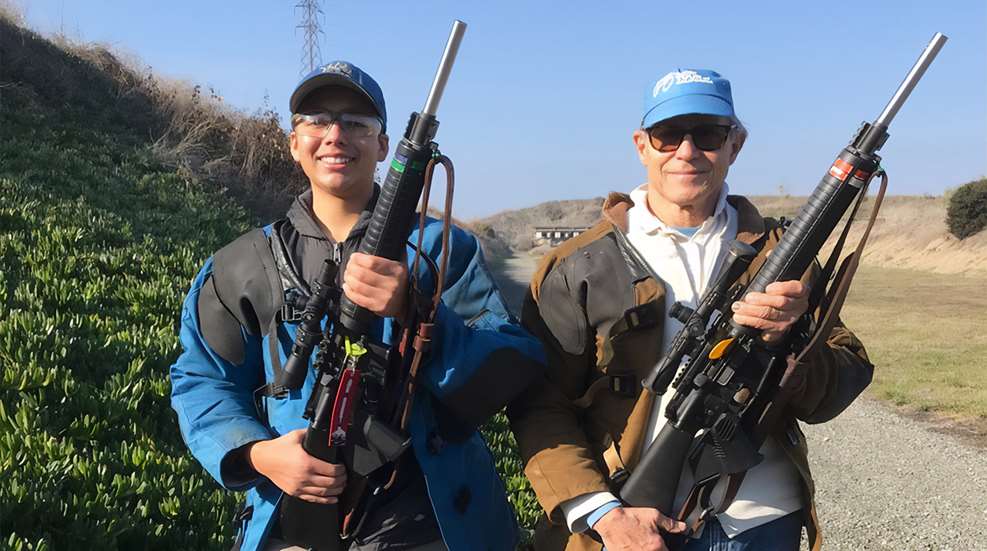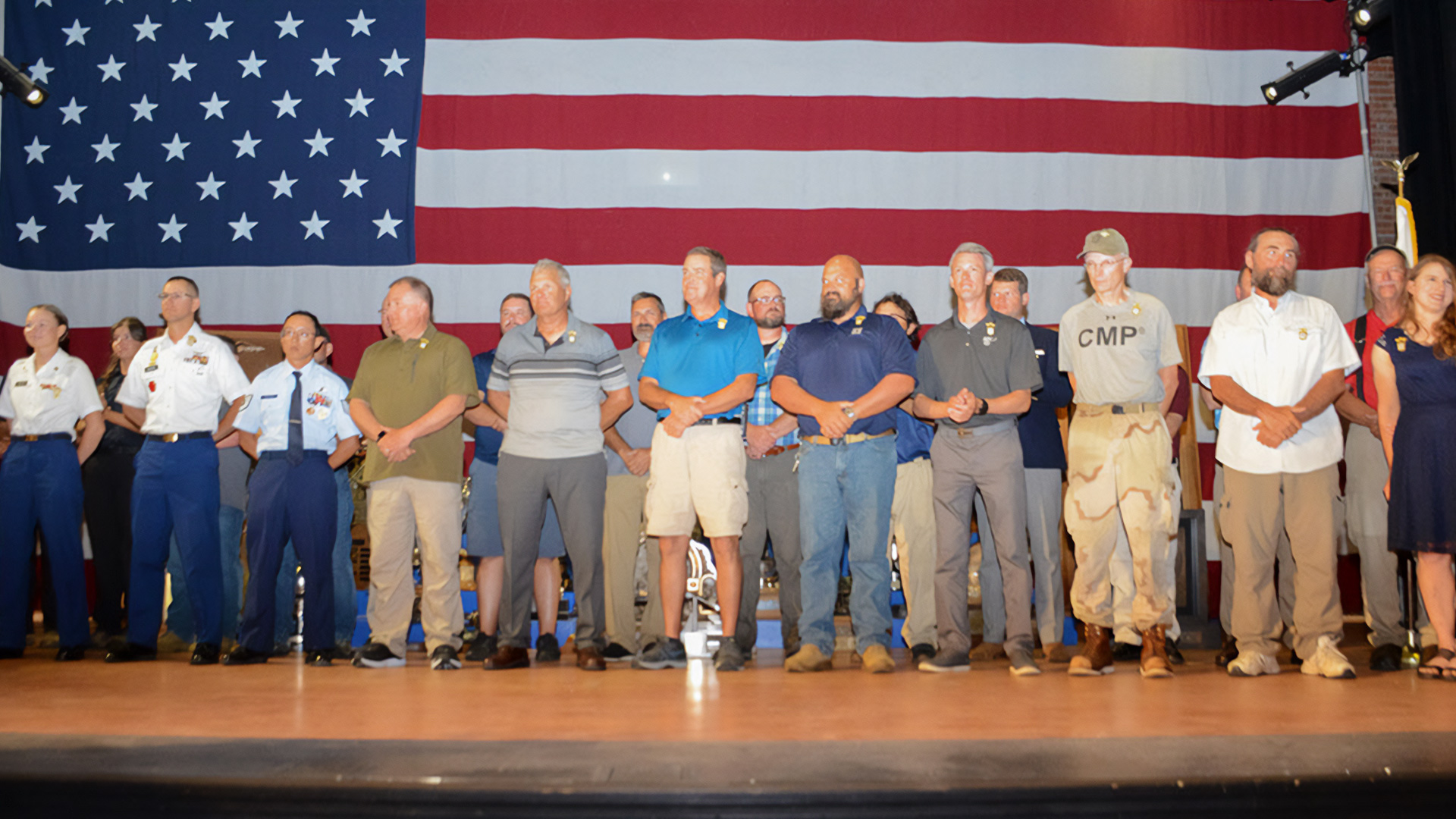
Ken Blaedel, 76, of Dublin, Calif., doesn’t let age get in the way of his success on the firing line. Last year, he reached an ambition that was more than a decade in the making—earning a Distinguished Rifleman badge. With the accomplishment, he has become one of few marksmen in history to achieve the feat after age 70.
Some individuals spend decades in search of a Distinguished badge, which is the highest individual award authorized by the U. S. government for excellence in marksmanship competition. Badges, offered in several disciplines, are presented by the Civilian Marksmanship Program after an individual receives at least 30 Excellence-In-Competition (EIC) “leg” points at qualifying matches.
“I never had any particular desire to go Distinguished,” Ken said.
Ken’s own journey started out as an unexpected one. It began in 2007 when one of his colleagues talked him into going to the Western CMP Games, an annual event held in Phoenix, Ariz. It was there that he shot an EIC match where he “magically got points.”
“I really enjoyed the match,” he said, outside of earning points. “You unpack your rifle, shoot your record shots with no sighters and then pack up your rifle. There is no futzing around or shooting alibis. If you don’t know your rifle, you are out of business—right from the start.”
A few months later, he went on to earn 10 more points at his home club, the Coalinga Rifle Club in Fresno. Though he kept on competing, 2008 to 2014 lacked a repeat showing.
“It was simply due to poor shooting—what can I say,” he teased about his slump in earning points.
“As I continue to age, my body doesn’t willingly do what I tell it to do,” he went on. “A position that worked well last year may not work today. I’ve had to continually change position, not just in standing, but even more so in sitting. The change can be in small increments or become almost continual—just trying to stay ahead of the inflexibility that accompanies age.”
Luckily, in April 2014, another match at Coalinga brought 10 more points, with his final points earned in October 2022 at the same club.
“The leg matches in California are well attended by well-trained juniors,” he explained. “The consequence, however, is that they routinely steal my points at leg matches.”
During the October 2022 match, he bested the high-scoring junior by one point. Thankfully, both reached EIC points in the end.

Coalinga is home to the California Grizzlies—a junior club filled with some of the most decorated and talented young shooters in the country. Since its formalizing in 2003, the Grizzlies have accrued countless junior wins in Camp Perry events while holding multiple national records.
“I think everyone around here supports the junior program,” Ken said. “It’s absolutely the best.”
Though he doesn’t train juniors himself, Ken mentioned there are lots of other ways to support the program—financially, emotionally, with donations or through plain, old-fashioned encouragement.
“Without a junior program, we don’t have a sport in the long run. It’s as simple as that,” he said.
After all, Ken was once a junior himself. As a child, he and his brothers shot a .22-cal. rifle in the backyard during the summer and in the basement during the winter against backstops built by their father.
His grandfather was a country doctor and carried a revolver—always a Smith & Wesson—on his rounds. Eventually, he talked Ken’s parents into letting him have a revolver as well, heading to the local gun store where his grandfather bought a Smith & Wesson K-22 for Ken to use.
“I still shoot it occasionally,” he said.
Ken went on to compete informally in smallbore rifle at a small indoor range in Wisconsin, especially during the winter. Later on, he shot bullseye pistol at the University of Wisconsin.
“Then life got in the way, and I didn’t start competing again until a few years before retiring,” he said.
Since high power seemed to be quite popular in the San Francisco Bay area, where Ken had moved, he decided to switch back to rifle. Ken’s career in Service Rifle began with an M14 before transitioning to the AR-15.
“We are incredibly lucky to have such an active community,” he said. “We can shoot three high power matches a month and literally every weekend if you are willing to drive one hour [or more]. Because I’m retired, I can and do routinely compete in high power three weekends a month. I shoot a practice session almost weekly and dry-fire maybe twice a week.”
“If you look at the really good shooters, they pick up a rifle daily—that’s every single day, no cheating or excuses—but I’m not there yet,” he joked.
The evolving world of marksmanship is partly what has made him able to stay competitive as the years go on.
“One aspect that has kept me shooting the Service Rifle is the telescopic sight,” he said. “This is certainly the most advantageous change to the rules for old people and old eyes.”
For those searching for a Distinguished shooting badge of their own, no matter the age, Ken has simple, yet effective advice.
“Don’t give up. Shoot the leg matches because they are wonderful matches,” he suggested. “If you leg out, great—if you don’t, it’s still a wonderful experience.”
“I certainly plan to continue shooting the individual matches that run concurrently with the leg matches. In the end, the most important thing is to shoot a good score—and secondly, to beat the juniors,” he joked again.
Although he faces a knee replacement in the near future, which will certainly cause radical change in his sitting position, it won’t keep him from the range. He will do his best to stay out there—enjoying the sport that has given him a lifetime of experiences and memories.
“There is no way I am quitting high power, but I may have to come to accept a couple-of-point decrease in score as a consequence—so be it.” he said. “The takeaway conclusion is that marksmanship is a wonderful sport in which you can participate for most of your life.”
Learn more about the CMP at thecmp.org.


































